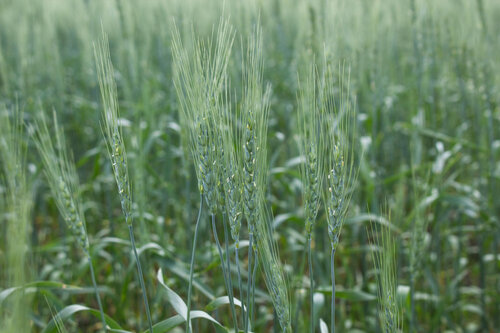Development of Canada Prairie Spring Red (CPSR) Wheat Cultivars for Western Canada

Most of the 1.5 million acres of Canada prairie spring red (CPSR) wheat grown in Canada every year (60 or 70%) is planted in Alberta. That’s just one of the reasons why Harpinder Randhawa, research scientist and wheat breeder with Agriculture and Agri-Food Canada, Lethbridge Research and Development Centre, thinks he is ideally located for the development of new CPSR varieties.
Lethbridge is in the heart of Southern Alberta’s irrigation district, where the environment is semi-arid, moisture is variable, and the growing season is moderately warm, windy, and quite long. The climate leads to natural epidemics of stripe rust and wheat stem sawfly, but Randhawa says, stripe rust and Fusarium head blight (FHB) are the most imminent threats to wheat production in the Prairies.
“We’ve been selecting for rust resistance here for a long, long time,” he says. “We’ve developed a very good germplasm base and that’s very important because rust has spread so widely and it continues to mutate. Our objective is to diversify and find different genes for resistance so the resistance in our newer varieties will last longer.”
Randhawa says improved high-yielding wheat lines with new genetic resistance to diseases will provide producers with efficient and economical control, which will reduce input costs and environmental impact by avoiding the use of chemicals. “Our overall goal is to develop new cultivars that reduce business risks for producers and processors, improve net farm income, and reduce environmental impact through decreased chemical inputs.”
He started making crosses in his CPSR breeding program in 2014 and the first line from those crosses received support for registration in February 2021. He says HY2090 has excellent agronomics and higher grain yield. It’s rated resistant for leaf rust, stem rust, stripe rust, and common bunt. It’s also rated moderately resistant for FHB and has low deoxynivalenol (DON) accumulation in the grain.
It generally takes 10 years to develop a new variety (from the first crosses to registration), but he did it in only six and a half years. He uses doubled haploid technology to shorten the amount of time it takes to develop a new line.
“In a tissue culture lab, we take the embryo and generate a doubled haploid plant. It generally takes 8 to 10 months from the initial cross to make a doubled haploid plant,” he explains. “In a year and a half, we can make a pure line that would have taken six years otherwise. This really saves us a lot of time and is a very efficient way of developing a new variety. It’s an integral part of my breeding program.”
Randhawa says doubled haploid technology has been around for a long time, but “it’s resource intensive and takes a lot of hard labour, so not every breeding program uses it. It’s also rewarding, because time is money when you quickly develop a variety and save three to four years in the development process.”
He says breeders also have a new selection tool that saves time and makes the selection process more predictable. “Genomic selection markers help us select better plants more efficiently, so we can bring new varieties to the marketplace very fast,” he explains.
This Wheat Cluster project received funding from Agriculture and Agri-Food Canada through the AgriScience Program, which is part of the Canadian Agricultural Partnership, a federal, provincial, territorial initiative. This project also received funding from Alberta Wheat Commission, Manitoba Crop Alliance, and Western Grains Research Foundation. With this support for continuing improvements in yield, quality, and disease resistance, Randhawa says, “producers should find wheat to be more profitable, making it critical for the long-term sustainability of rural communities and the success of the bio-economy.”
To read the project profile, CLICK HERE.